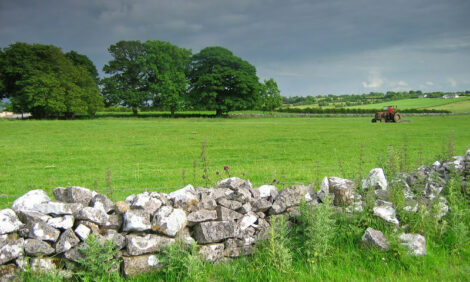



Scientists Make Turfgrass Safer For Cattle
US - The right combination of compounds produced by a beneficial fungus could lead to grasses that require fewer pesticides and are safer for wildlife and grazing animals, but deadly for insects, according to Purdue University scientists.Neotyphodium is a fungus called an endophyte. It lives symbiotically, feeding off many species of grasses while providing the grass with protection from insects such as black cutworm. But Neotyphodium also can be toxic to animals based on the types of alkaloids it produces. It was once a serious concern for pasture managers.
Scientists have previously eliminated alkaloid profiles that caused toxicity in livestock, meaning pasture managers could feed their livestock without making them sick. But in making the grasses safe for animals, their susceptibility to insects came into question.
"These endophytes have changed everything for farmers who let their animals graze," said Douglas Richmond, a Purdue assistant professor of turfgrass entomology and applied ecology. "But they created another potential problem."
Mr Richmond worked with researchers in New Zealand to assemble a series of Neotyphodium endophytes that are safe for livestock consumption and tested them to see which would also act as natural insecticides.
They found a relatively few strains of the fungus that meet both criteria by producing two key alkaloid toxins - N-acetyl norloline and peramine – which are a product of the fungal metabolism. The scientists determined they were effective by characterising insect growth and survival on grasses with different alkaloid profiles.
Mr Richmond said that grasses naturally infected with the desired endophyte strains can now be propagated for commercial production.
"Both are relatively safe for mammals and other grazing wildlife," Mr Richmond said. "Now the seed industry can put these endophytes into turf and pasture grasses and not worry about potential non-target effects."
Those endophytes also mean that farmers, golf course turf managers and even homeowners caring for their lawns could use fewer insecticides to manage their grasses.
"I think this is going to be very important for sustainability. It's going to decrease the footprint of cultured turf and pasture grasses," said Mr Richmond, whose results were published in the Journal of Environmental Entomology.
"And if you like having wildlife around – having deer come up to your lawn if you live near the woods – this is a benefit because it's safe for those animals."
Mr Richmond said he is working with a New Zealand company, AgResearch USA Ltd., that develops turfgrass varieties to include these novel endophytes for sale in the US turfgrass market.
The Midwest Regional Turf Foundation, AgResearch USA Ltd. and internal Purdue University funding supported the research.


